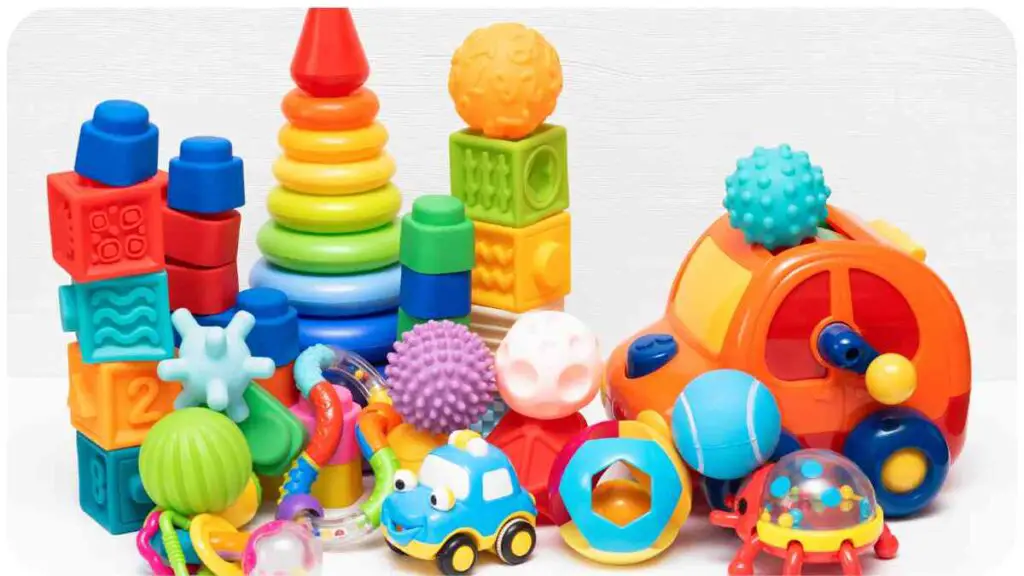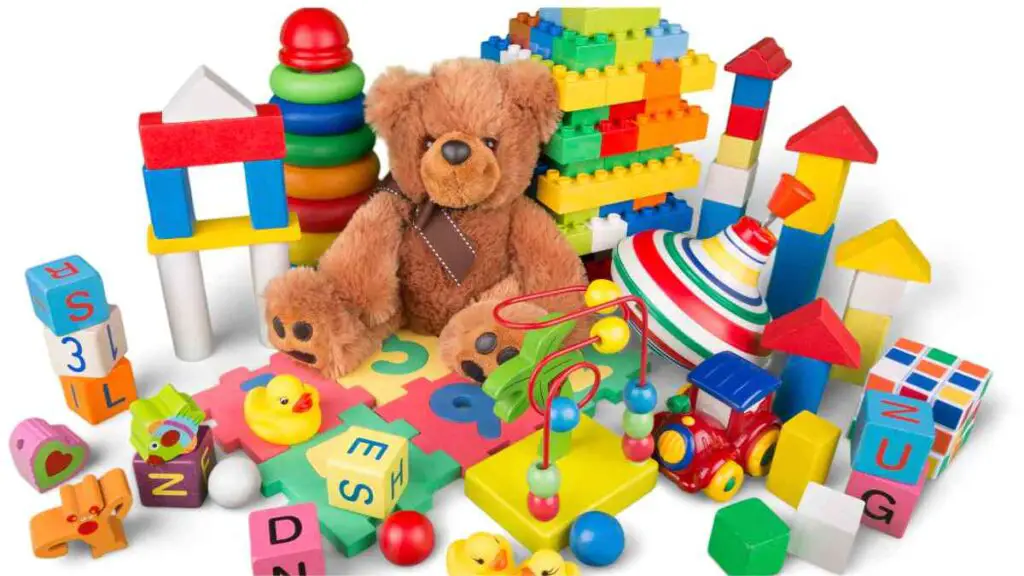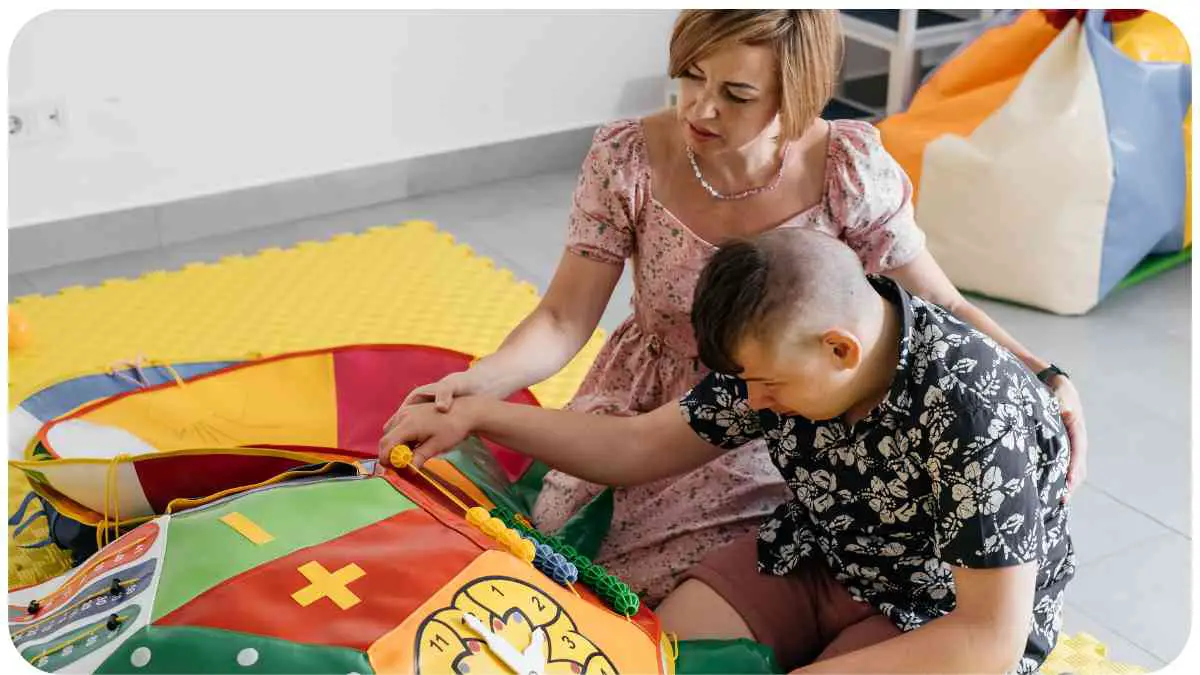Welcome to our comprehensive guide on sensory toys and their potential effectiveness in managing anxiety. In this article, we will delve into the world of sensory toys and explore whether they truly help alleviate anxiety symptoms.
If you or a loved one struggle with anxiety, you may have heard about the benefits of sensory toys in providing relief and promoting a sense of calm. But how effective are they really? Let’s examine this question in detail and shed some light on the topic.
| Key Takeaways |
| Sensory toys can be effective tools for managing anxiety. |
| They provide sensory input, promote relaxation, and improve focus. |
| Sensory toys are beneficial for individuals of all ages, not just children. |
| Choosing the right sensory toy involves considering sensory preferences, safety, age appropriateness, and quality. |
| Sensory toys should be used in conjunction with therapy for comprehensive anxiety management. |
2. Understanding Anxiety
Before diving into the role of sensory toys, it’s essential to grasp a basic understanding of anxiety. Anxiety is a normal human emotion; however, it becomes problematic when it interferes with our daily lives. It can manifest as excessive worry, fear, and tension, often leading to physical symptoms like increased heart rate, rapid breathing, and restlessness.
3. The Role of Sensory Toys in Managing Anxiety

Sensory toys have gained popularity as a potential tool for anxiety management. These toys aim to engage the senses, providing individuals with a calming and soothing experience. While they may not be a cure-all solution for anxiety, they can certainly complement existing coping strategies and provide a helpful outlet for stress and anxiety relief.
4. Benefits of Sensory Toys for Anxiety Relief
4.1 Stress Reduction
Sensory toys can help reduce stress by redirecting focused and anxious thoughts onto a specific task or activity. Engaging with a sensory toy can provide a sense of control and redirect attention away from negative stimuli or anxious thoughts.
| Brand | Description | Price |
| Calm Spinners | Spinners designed to promote relaxation and focus | $12.99 |
| Tranquil Tubes | Liquid visual timers that aid in stress reduction | $16.99 |
| Serene Squish | Squeeze and stretch stress balls for anxiety relief | $9.99 |
| Zen Garden | Miniature sand garden with tools for mindful relaxation | $19.99 |
| Soothing Stones | Smooth stones for grounding and calming sensations | $7.99 |
4.2 Stimulating the Senses
Sensory toys are specifically designed to stimulate the senses, promoting a calming effect on individuals with anxiety. These toys engage different sensory modalities such as touch, sight, sound, and proprioception, providing a multi-sensory experience that can help regulate emotions and promote relaxation.
| Brand | Description | Price |
| Sensory Balls | Textured balls that provide tactile stimulation | $8.99 |
| LED Light Projector | Projectors that create soothing visual displays | $24.99 |
| Sound Therapy Set | Collection of calming sounds and music for auditory stimulation | $29.99 |
| Weighted Lap Pad | Lap pads with gentle pressure to provide a calming proprioceptive input | $39.99 |
| Aromatherapy Kit | Essential oils and diffuser to engage the sense of smell | $19.99 |
4.3 Improving Focus and Concentration
For individuals with anxiety, focusing on a task or staying present can be a challenge. Sensory toys can help improve focus and concentration by providing a point of interest and diverting attention from anxious thoughts. These toys can create a calmer and more conducive environment for work, studying, or relaxation.
| Brand | Description | Price |
| Fidget Cube | Pocket-sized cube with various tactile features | $9.99 |
| Spinning Tops | Tops that spin for a visual and tactile experience | $6.99 |
| Concentration Spinner | Spinner designed to enhance focus and attention | $12.99 |
| Noise-Canceling Earbuds | Earbuds that block out background noise | $29.99 |
| Study Table Organizer | Organizer with compartments for focused studying | $24.99 |
4.4 Developing Coping Mechanisms
Sensory toys can help individuals with anxiety develop healthy coping mechanisms. Engaging with these toys provides a constructive outlet for stress and anxiety, allowing individuals to explore different strategies for self-soothing and emotional regulation.
| Brand | Description | Price |
| Mindfulness Coloring Book | Coloring book with soothing designs for relaxation and mindfulness | $7.99 |
| Stress Relief Putty | A malleable putty that can be squeezed and molded for stress relief | $9.99 |
| Breathing Exercise Cards | Cards with guided breathing exercises to promote relaxation | $11.99 |
| Emotional Regulation Kit | Kit with tools and resources for managing emotions and self-regulation | $29.99 |
| Anxiety Journal | Journal prompts and activities to track and manage anxiety symptoms | $14.99 |
By incorporating these sensory toys into daily routines, individuals can develop a toolkit of coping mechanisms to manage anxiety more effectively.
5. Types of Sensory Toys

Now that we have explored the benefits of sensory toys, let’s take a closer look at some specific types of toys that are commonly used to alleviate anxiety symptoms.
5.1 Fidget Toys
Fidget toys, such as spinners, cubes, and sliders, are designed for tactile stimulation and repetitive movements. These toys provide an outlet for excess energy and can help improve focus and attention.
5.2 Weighted Blankets
Weighted blankets are blankets filled with small glass beads or plastic pellets, providing gentle pressure and a feeling of being hugged. This deep pressure touch can promote relaxation and improve sleep quality.
5.3 Stress Balls
Stress balls are compact, squeezable toys that can be manipulated to relieve stress and tension. They offer a physical release and can help redirect anxious energy.
5.4 Sensory Bottles
Sensory bottles contain various materials like glitter, beads, or water, providing visual and auditory stimulation. These bottles can be shaken or tilted, offering a calming effect and promoting a sense of serenity.
5.5 Chewelry
Chewelry, also known as chewable jewelry, is wearable accessories like necklaces or bracelets specifically designed for individuals who have a need for oral sensory input. They provide a safe and appropriate alternative to inappropriate chewing habits.
5.6 Kinetic Sand
Kinetic sand is a moldable and squishy material that provides tactile and sensory input. It can be shaped, molded, and squeezed, allowing individuals to engage their senses and experience a calming effect.
5.7 Squishy Toys
Squishy toys are soft and squishy toys that can be squeezed and manipulated. They offer tactile stimulation and can help redirect anxious or fidgety behavior.
5.8 Tangle Toys
Tangle toys are twistable toys that consist of interconnected segments that can be bent and twisted into various shapes. They provide a repetitive tactile experience and can help promote focus and relaxation.
| Brand | Description | Price |
| Twisty Tangle | A classic tangle toy for endless twisting and fidgeting | $6.99 |
| Squishy Banana | A banana-shaped squishy toy for tactile stimulation | $4.99 |
| Sensory Blocks | Blocks with different textures and shapes for sensory play | $14.99 |
| Chewable Bracelet | Bracelet made of safe material for oral sensory input | $9.99 |
| Moldable Sand | Kinetic sand that can be molded and shaped for sensory play | $12.99 |
Each of these sensory toys offers unique benefits and can be tailored to an individual’s sensory preferences and needs.
6. How to Choose the Right Sensory Toy

With a variety of sensory toys available, it’s important to choose the right one that suits your or your loved one’s needs. Here are some factors to consider when selecting a sensory toy:
6.1 Assess Individual Needs and Preferences
Each individual’s anxiety and sensory needs are unique. Consider what type of sensory input is most beneficial and whether there are specific triggers or preferences that should be taken into account.
| Brand | Sensory Preference | Price |
| Calm Spinners | Tactile and visual | $12.99 |
| Tranquil Tubes | Visual and auditory | $16.99 |
| Serene Squish | Tactile and stress relief | $9.99 |
| Zen Garden | Visual and tactile | $19.99 |
| Soothing Stones | Tactile and grounding | $7.99 |
6.2 Consider Sensory Preferences
Take into account the sensory preferences of the individual. Some people may prefer tactile stimulation, while others may find visual or auditory input more soothing. Choose a sensory toy that aligns with those preferences.
6.3 Safety Considerations
Ensure that the sensory toy is safe to use. Avoid toys with small parts that can be a choking hazard, and check for non-toxic materials.
6.4 Age Appropriateness
Consider the age appropriateness of the toy. Some sensory toys may be designed specifically for children, while others may be suitable for individuals of all ages.
6.5 Quality and Durability
Choose a sensory toy that is made of high-quality materials and is durable enough to withstand regular use. This ensures longevity and value for money.
By considering these factors, you can select a sensory toy that best meets your needs or the needs of your loved one.
7. Where to Find Sensory Toys
When it comes to finding sensory toys, there are several options available:
7.1 Online Retailers
Online retailers such as Amazon, Walmart, and specialized sensory toy websites offer a wide range of options with reviews and ratings from other customers. These platforms provide convenience and allow you to explore a variety of sensory toys from the comfort of your home.
7.2 Specialty Stores
Specialty toy stores, educational supply stores, and therapy centers often carry a selection of sensory toys. These stores may have knowledgeable staff who can provide recommendations based on individual needs and preferences.
7.3 Local Therapists and Clinics
Occupational therapists, psychologists, or other healthcare professionals who specialize in anxiety or sensory processing disorders may offer recommendations for specific sensory toys. They may have resources available or be able to provide guidance on where to find appropriate toys.
7.4 DIY Options
If you prefer a more hands-on approach or want to save costs, some sensory toys can be made at home using everyday materials. Online tutorials or DIY blogs can provide step-by-step instructions for creating sensory toys like homemade stress balls or sensory bottles.
Consider the options available to you and choose the one that best aligns with your preferences, budget, and convenience.
8. Tips for Using Sensory Toys Effectively
While sensory toys can be beneficial in managing anxiety, it’s important to use them effectively. Here are some tips to maximize their effectiveness:
8.1 Set Realistic Expectations
Remember that sensory toys are not a cure-all solution for anxiety. They are tools that can support and complement existing coping strategies. Set realistic expectations and understand that individual responses and preferences may vary.
8.2 Encourage Regular Use
Incorporate the use of sensory toys into daily routines. Encourage regular use, especially during times of heightened anxiety or stress. Consistency is key to experiencing the full benefits of sensory toys.
8.3 Combine Sensory Toys with Other Strategies
Sensory toys work best when used in conjunction with other anxiety management techniques such as deep breathing exercises, mindfulness practices, or therapy. Use them as part of a holistic approach to anxiety management.
8.4 Modify the Environment
Create a calming environment that supports the use of sensory toys. Minimize distractions, adjust lighting, and make space for comfortable and focused engagement with the toy.
8.5 Seek Professional Advice
If you or your loved one are struggling with anxiety, it is recommended to consult with a healthcare professional or therapist. They can provide personalized guidance and recommendations on using sensory toys effectively as part of an overall anxiety management plan.
9. Success Stories and Personal Experiences
Hearing personal experiences and success stories can provide further insights into the effectiveness of sensory toys for anxiety relief. Here are some examples:
9.1 Personal Testimony 1
“I have struggled with anxiety for years, and incorporating sensory toys into my self-care routine has made a significant difference. Using a stress ball during stressful situations helps me redirect my anxious energy, while a weighted blanket has improved my sleep quality. Sensory toys have become valuable tools in my anxiety management toolbox.”
9.2 Personal Testimony 2
“My child has sensory processing disorder and struggles with anxiety. Introducing sensory toys, such as fidget spinners and chewelry, has helped them stay focused and regulated in school. These toys provide a calming outlet and have helped reduce their anxiety levels.”
9.3 Personal Testimony 3
“As an occupational therapist, I frequently recommend sensory toys to my clients with anxiety. I have seen significant improvements in their ability to self-regulate and manage their anxiety symptoms. Sensory toys provide a tangible and enjoyable way for them to engage with their senses and find moments of calm.”
9.4 Personal Testimony 4
“I initially had doubts about the effectiveness of sensory toys for anxiety relief, but after introducing a stress ball into my daily routine, I have been pleasantly surprised. Squeezing the stress ball helps me focus and provides a physical release for my anxiety. It has become an essential tool in managing my anxiety symptoms.”
These personal testimonies highlight the positive impact that sensory toys have had on individuals’ anxiety management journeys.
10. Frequently Asked Questions (FAQs)
10.1 What Are Sensory Toys?
Sensory toys are objects specifically designed to engage the senses and provide sensory input. They come in different shapes, sizes, and textures, targeting various sensory modalities such as touch, sound, sight, and proprioception.
10.2 Do Sensory Toys Really Help with Anxiety?
While sensory toys are not a singular solution, they can be effective tools for managing anxiety. They offer sensory input and provide a calming effect, helping individuals redirect their attention and find moments of relaxation.
10.3 Can Sensory Toys Replace Therapy?
Sensory toys are not intended to replace therapy. They can be used as a complementary tool to support therapy and other anxiety management strategies. It is important to work with a healthcare professional or therapist to develop a comprehensive approach to addressing anxiety.
10.4 Are Sensory Toys Only for Children?
Sensory toys can be beneficial for individuals of all ages. While they are commonly associated with children, adults with anxiety can also find relief and relaxation through sensory stimulation. There are sensory toys available that cater to various age groups and preferences.
10.5 Can I Use Sensory Toys in Public?
Yes, sensory toys are portable and can be discreetly used in public settings to provide sensory input and help manage anxiety. Fidget toys, putty, or chewable jewelry, for example, can be easily used without drawing attention to oneself.
Always be mindful of your surroundings and follow any rules or regulations in place when using sensory toys in public spaces.
Conclusion
Sensory toys can be valuable tools in managing anxiety by providing sensory input, promoting relaxation, improving focus and concentration, and developing healthy coping mechanisms. There are various types of sensory toys available, and it’s important to choose the right one based on individual needs and preferences.
When using sensory toys, it is important to set realistic expectations, encourage regular use, combine them with other strategies, create a calming environment, and seek professional advice when needed.
Personal testimonies and success stories highlight the positive impact that sensory toys can have on anxiety management. However, it is important to remember that individual experiences may vary, and it is always beneficial to work with healthcare professionals or therapists for personalized guidance.
Overall, with the right selection and usage, sensory toys can be valuable tools in addressing anxiety and promoting overall well-being.
Further Reading
Here are some additional resources to learn more about the effectiveness of sensory toys for anxiety relief:
- Forbes: Fidget Toys for Anxiety: This article discusses the benefits of fidget toys and how they can help alleviate anxiety in various settings.
- Toy-Relax: Do Fidget Toys Help with Anxiety?: This blog post explores the relationship between fidget toys and anxiety, providing insights into their effectiveness based on personal experiences.
- Medical News Today: Fidget Toys for Anxiety: This article provides an overview of fidget toys and their potential benefits in managing anxiety, as well as considerations for choosing the right fidget toy.
FAQs
What are sensory toys?
Sensory toys are objects designed to engage the senses and provide sensory input. They can include items with different textures, shapes, and sounds that stimulate touch, sight, hearing, and other senses.
How do sensory toys help with anxiety?
Sensory toys can help manage anxiety by providing a calming effect, promoting relaxation, improving focus and concentration, and offering a positive sensory experience that redirects attention from anxious thoughts.
Are sensory toys only for children?
No, sensory toys are suitable for individuals of all ages. While often associated with children, adults with anxiety can also benefit from sensory stimulation provided by these toys.
Can sensory toys replace therapy?
Sensory toys are not intended to replace therapy. They can serve as a complementary tool to support therapy and other anxiety management strategies, but it is important to work with a healthcare professional or therapist for a comprehensive approach to addressing anxiety.
How can I choose the right sensory toy?
Choosing the right sensory toy depends on personal preferences and needs. Consider factors such as sensory preferences, safety, age appropriateness, and quality when selecting a sensory toy. Consulting with a healthcare professional or therapist can also provide guidance in choosing the most suitable toy for individual circumstances.

Meet Hellen James, the multi-talented writer and nurturing mother who takes young readers on a thrilling journey through her sensory-infused blog. Drawing inspiration from her own experiences as a parent.

